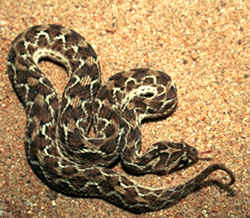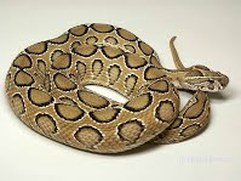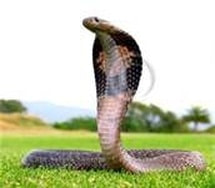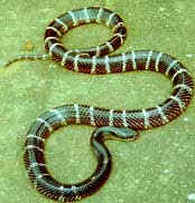Big Four - Deadliest Indian Snakes |

Custom Search
|
It's estimated that there are around 250000 venomous snake bites per year in India. From those it's estimated that approximately 15 to 20% of the snake bite victims die, which means around 35,000 to 50,000 fatalities per year.
India's “Big Four” venomous snakes include the following species: - Common Krait - Saw Scaled Viper - Indian Cobra or Spectacled Cobra - Russell’s Viper 
Saw-Scaled Viper
The Saw-Scaled Viper or Carpet Viper (Echis carinatus) is considered one of the most aggressive snake species in the world. The Saw-Scaled Viper is found in the Indian subcontinent in India, Sri Lanka, Pakistan and Bangladesh and also Middle-East Asia and Central Asia. They belong to the vipers family (Viperidae) and 5 subspecies are currently recognized. These are quite small snakes, their total length ranges from 30 cm (11 inches) to 65 cm (25 inches). It's the smallest of the Big Four snake species, but it has the fastest strike and it strikes to bite. The Saw-Scaled Viper also has a unique threat display, a “sizzling” warning sound produced by rubbing sections of their body together. 
Russell’s Viper
The Russell's viper or Indian Russell's Viper (Daboia russelii) is viper snake species found in India, Pakistan, Bangladesh, Sri Lanka, Laos, Myanmar, China, Thailand, Cambodia and also parts of Indonesia. These snakes are responsible for the most snakebite incidents and deaths by venomous snakes in Asia. There are 2 subspecies currently recognized, Russell's Viper and Eastern Russell's Viper although this sometimes is treated as a separate species. The word 'Daboia' means "hidden" or "lurker" in Hindi. The Russell's vipers ambush their prey, its patterned skin allows it to camouflage and merge with the background. It is so successful that another snake mimics its appearance, the Rough-Scaled Sand Boa (Gongylophis conicus) color pattern is similar to that of Russell's Viper, even though it is harmless because it's a non-venomous snake. The Russell's Viper produces a venom with a potent neurotoxin which affects the nervous system, causing paralysis and death if untreated.

Indian Cobra
The Indian Cobra (Naja naja) is a species of the genus Naja from family Elapidae found throughout the Indian subcontinent which includes present India, Nepal, Pakistan, Bangladesh, and Sri Lanka. The species is also known as the Spectacled Cobra, Asian cobra or Binocellate cobra. On the back of their large and quite impressive hood are two circular ocelli patterns connected by a curved line, resembling spectacles. The Indian Cobra average length is about 1.9 meters (6 feet). These snakes are revered in the Indian mythology and culture and are often seen with snake charmers. The species is protected under the Indian Wildlife Protection Act (1972). 
Common Krait
The Common Krait (Bungarus caeruleus) snake species is an elapid found in the Indian subcontinent. It's also known as the blue krait or Indian krait. Their colors range from blue, black to brown or grey, with white stripes more prominent on the lower part of the body and an average length of 100 cm with a thin and round body. The Common Krait feeds mainly on other snakes, even other kraits, but sometimes eats rodents, lizards, and frogs. Of the ‘Big Four’ venomous snakes found in India, the Common Krait is the most venomous its venom is considered to be 15 times more toxic than that of the Indian cobra. The American soldiers in Vietnam used to call the "five-step snake" to the Blue Krait (Bungarus candidus) a similar species not found in India but also highly venomous. The name means that if you got bitten by a krait you would take five steps and then die. The mortality rate is 50 percent even with antivenin treatment and 70 or 80 % without treatment. That is why they are considered one of the deadliest snake species in the world.
|
Did You Know?
It's a common myth that Cleopatra used the highly venomous Egyptian cobra to kill herself. |
© 2014 Snake Facts About Us | Privacy Policy | Contact





